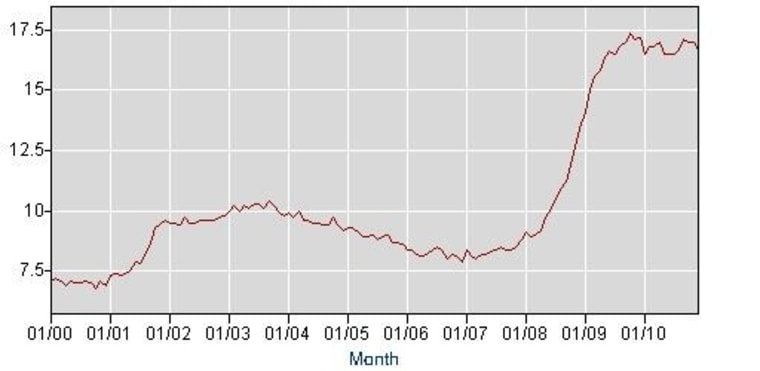In the last couple of years, you may have heard talk about how the “real” unemployment rate is much higher than the “official” one economists always talk about.
That’s not a crazy conspiracy theory.
The basic unemployment rate, which hit 9.4 percent in December, is calculated based on the number of people who say they don’t have a job but would like to have one and have looked for work actively in the last four weeks.
That rate is a good baseline for how the economy is doing. That’s why it’s mentioned most often in stories about joblessness.
Chances are we all know someone out there who also is unemployed but wouldn’t fit those characteristics.
The government tries to account for those people with what it calls “alternative measures of labor underutilization.”
That's a mouthful, but it includes people working part-time who would like to be working full-time. It also includes people who are considered “marginally attached” to the job market.
That means they would like to work but have only looked for a job some time in the last 12 months. In December, about half of those folks were what the government calls “discouraged workers,” or people who just don’t think there’s a job out there for them.
When you include all those people, the broader measure of unemployment jumps to 16.7 percent for December, according to the Labor Department. It’s stayed between 16.4 percent and 17.4 percent since May of 2009, the month before the recession officially ended.
By comparison, that measure stood at 8.8 percent in December of 2007, the month the recession began.
